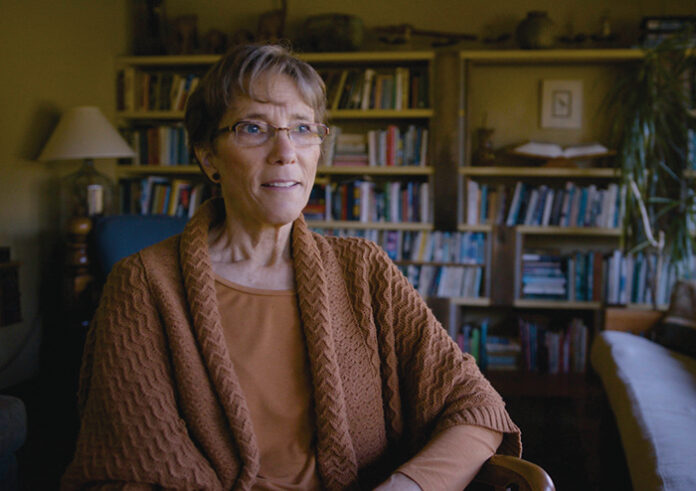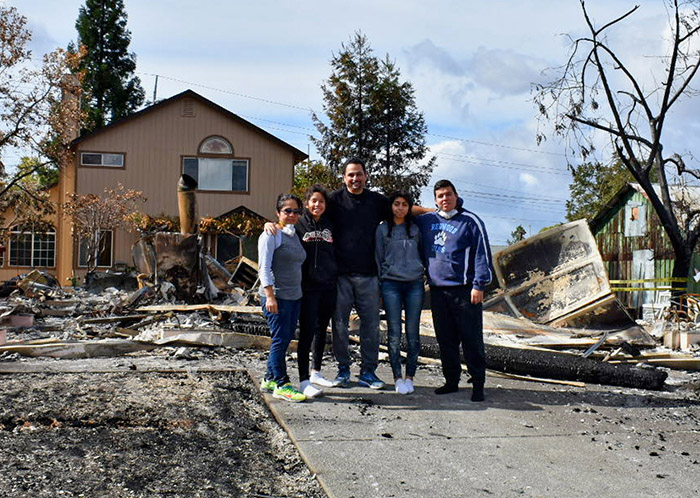
Images of the Tubbs Fire devastation that swept across Sonoma County just under five years ago, in October 2017, invariably trigger reminders of just how sudden and complete the disaster was.
That’s understandably how Embers of Awakening begins, but that is not where it ends: the subtitle is From Firestorms to Climate Healing, and the award-winning new documentary journeys steadily toward outlining the changes that people need make in the way they live—and the possibility that the coming generations are ready to make them.
“I was made aware of this movie by one of our Healdsburg Rotary Club members who saw it at the Alexander Valley Film Festival,” said Norman Fujita, Healdsburg Rotary’s environmental director. “She thought this film would be important to show in our community.”
International and district Rotary heads—both women—have emphasized environmental challenges for each club. “The challenge for August is ‘Drought and Fire Prevention.’ Our club has taken on this challenge by planning to show the documentary film Embers of Awakening,” Fujita said.
Fujita contacted Phyllis Rosenfield of Petaluma, the director and producer of the 75-minute film which just finished production this year. Rosenfield, a climate activist and former Healdsburg elementary school teacher, serves as executive director of Listening For A Change, a Santa Rosa nonprofit focused on education, oral history and social communication.
Embers of Awakening, her first full film, received a big boost early in its production when Peter Coyote agreed to lend his voice to the all-important preview—which is used to encourage sponsors—and then to the finished film itself. That alone gives it a gravitas worthy of its subject, and the cinematography by Jeff den Broeder and editing by Shirley Thompson, who worked remotely from Hawaii, contribute to its weight.
“We’d like to make a film that motivates people to understand what happens to real people, a real community, and what can be done” in the wake of fire disaster, Rosenfield told Tommie Dell Smith of Cloverdale, who co-produced the Oscar-winning documentary Broken Rainbow in 1984. When Smith came on as Embers of Awakening’s co-producer, she gave the project the momentum it needed, and the 114-minute film was completed in April of this year.
Aside from news footage, found mostly in the first part of the movie, the film is built around a series of interviews with fire survivors, fire ecology specialists, social activists and farmworkers. They all contribute to the wide net cast in telling the story of fire’s impact, and what can be done in recovery.
“As a homeowner you can do everything right, and you still may lose your home,” says Jeff Kane, a Humboldt State associate professor of fire ecology. Such after-the-fact obvious steps as clearing understory through prescribed burns, or landscape thinning with goat herds, as well as the defensible-space solution, all fall by the wayside when you consider that houses are just fuel in a firestorm, one of the witnesses says.
That crucial zone is called the “wildland-urban interface” or WUI, where human development meets undeveloped grasslands or forests. Its frail stability is clearly demonstrated by news footage of the 1964 Hanly Fire, which burned across the Mayacamas into Santa Rosa in almost the exact same footprint as the 2017 Tubbs Fire.

One difference: the Tubbs Fire moved across the same landscape eight times faster than the Hanly, said Lisa Micheli of the Pepperwood Preserve. The Preserve was 95 percent burned in 2017.
Inexplicably, a couple of decades later residential development thrived in the burn path of the 1964 fire, so in one sad sense the sacrifice of Fountaingrove 57 years later seems preordained. Yet when we drive through the area today, we see history repeating itself.
A number of other locally familiar and valuable voices are brought forward in Embers of Awakening, including Geof Syphers of Sonoma Clean Power, Katie Jackson of Jackson Family Vineyards, Climate Center co-founder Ann Hancock, historian emeritus Gaye LeBaron and Supervisor Susan Gorin, who lost her own Oakmont home in the Tubbs fire.
Embers of Awakening screened locally at the Alexander Valley Film Society’s annual festival in May, where the local Rotary got wind of it. More recently it won two Awards of Merit at the Impact Docs Competition, part of the respected Global Film Awards family of competitions.
The Aug. 17 program will include an informal “climate and environment” fair when the doors open at 6:15pm, with six local climate organizations at tables to share information. A panel discussion will follow the screening with several important voices from the film, including Claudia Luke, director of sustainability at Sonoma State; Healdsburg physician and climate activist John Mihalik; and Fire Chief Marshall Turbeville of the Northern Sonoma County Fire District.
“There’s still a window, [a] small window of opportunity to make a difference, and civic engagement is a big piece of the survival of our democracy and the hope of turning things around,” Rosenfield said. “I deeply believe this.”
“Embers of Awakening: From Firestorms to Climate Healing” starts at 7pm, and the panel discussion begins about 8:15pm. Tickets are $10, available online at RavenTheater.org and at the door. Students are admitted free







